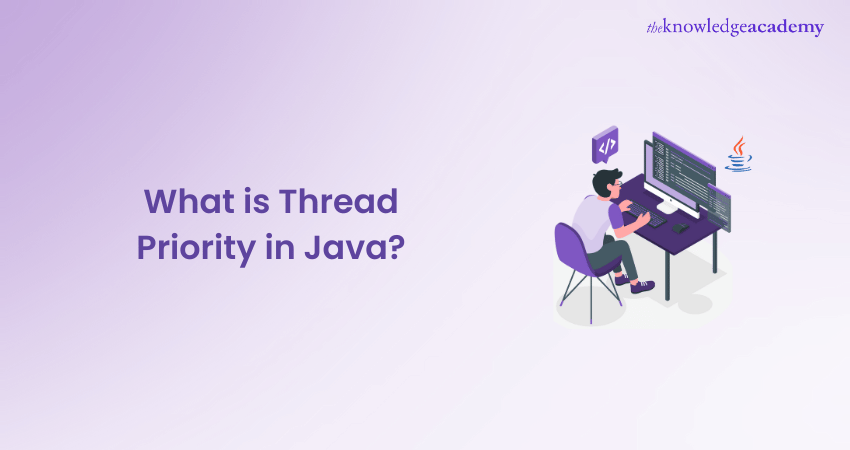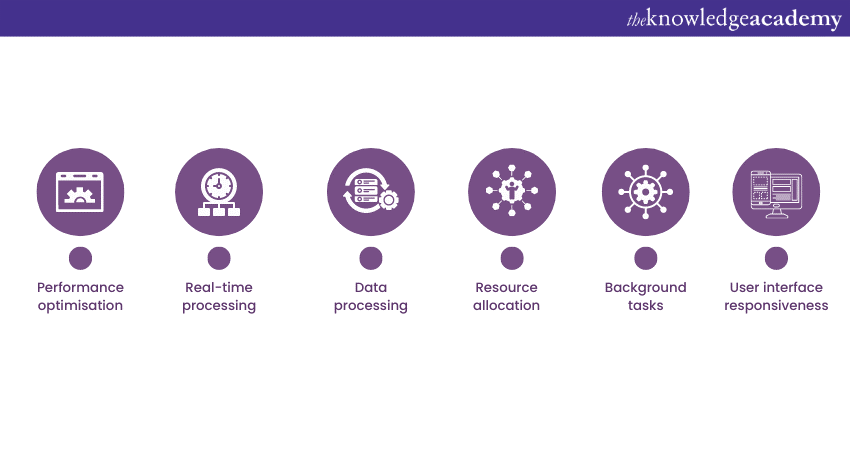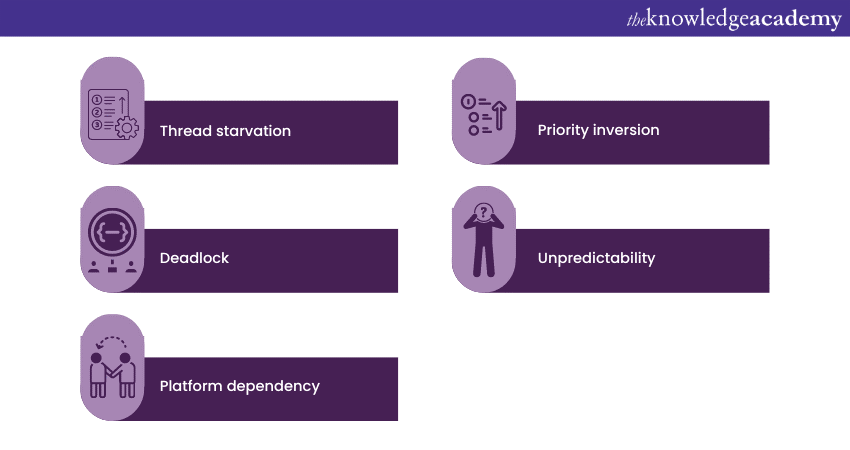We may not have the course you’re looking for. If you enquire or give us a call on 01344203999 and speak to our training experts, we may still be able to help with your training requirements.
Training Outcomes Within Your Budget!
We ensure quality, budget-alignment, and timely delivery by our expert instructors.

Java, a very popular object-oriented programming language, supports multi-threading, which enables multiple operations to run concurrently for efficient performance. One fundamental aspect is Thread Priority in Java, which is an integral feature that determines the sequence and frequency of thread execution.
Furthermore, Thread Priority is an integer value that dictates the precedence of threads during execution. In this blog, you will learn about Thread Priority in Java, how to configure them, and how the Java scheduler utilises them. Continue reading to learn more.
Table of Contents
1) An introduction to Thread Priority in Java
2) Concept of Threads in Java
3) The importance of Thread Priority in Java
4) Various use cases of Thread Priority in Java
5) Potential issues with Thread Priorities
6) Best practices when handling Thread Priority
7) Conclusion
An introduction to Thread Priority in Java
Thread priority in Java refers to the numeric representation, ranging from 1 (lowest) to 10 (highest), assigned to each thread in a multi-threaded environment to indicate its relative importance. Additionally, a higher-priority thread generally gets precedence in execution over a lower-priority thread. By default, all Java threads inherit their priority from the parent thread, with the main thread having a default priority of 5.
Moreover, Thread priority is platform-dependent and can be modified using the setPriority() method. However, improper management of thread priorities can lead to issues such as thread starvation. Hence, it's crucial to use thread priorities judiciously and in conjunction with proper synchronisation and thread management strategies to create efficient multi-threaded applications.

Concept of Threads in Java
A Thread in Java is the smallest unit of processing that can be scheduled by an operating system. Threads are like workers that live inside a program, each performing a specific task concurrently with others, which is critical for multi-tasking and efficient use of CPU time.
You can think of a multi-threaded Java program as a busy office where several employees (threads) are working simultaneously on different tasks. While one thread is waiting for a resource, other threads can continue their tasks, leading to efficient resource utilisation. Furthermore, when you start a Java application, one thread begins running immediately. This is often called the 'main' thread, because it is the one that is executed when your program starts. From this main thread, you can create and start other threads.
The beauty of Threads in Java lies in the fact that you can execute several operations independently and simultaneously. For example, one thread can perform a lengthy database operation, while another handles user input, and a third might display output. However, multi-threading can be complex to manage due to issues like deadlocks or resource contention. Hence, Java provides several synchronisation constructs like synchronised blocks and wait-notify mechanisms to ensure the orderly execution of threads.
Various use cases of Thread Priority in Java
Here are the many use cases of Thread Priority in Java, explained briefly as follows:

a) Performance optimisation: Developers can use thread priority to optimise the performance of a multi-threaded application by prioritising CPU-intensive tasks.
b) Real-time processing: In real-time systems, some tasks may need immediate attention. Thread priority can help by ensuring these threads are executed first.
c) Data processing: In data processing applications, data collection threads can be assigned a higher priority than data analysis threads to ensure data is always ready for analysis.
d) Resource allocation: Thread priority can be used to manage the allocation of limited resources in an application, prioritising access for more critical threads.
e) Background tasks: Lower priority can be assigned to background tasks (like logging or performance monitoring), ensuring they don't disrupt the main tasks.
f) User interface responsiveness: In GUI applications, the thread handling user interface can be given high priority to maintain fluid user interaction, while background computations can be carried out by lower-priority threads.
Learn to develop platform-independent applications, by signing up for the Java Engineer Training Course now!
Potential issues with Thread Priorities
Thread Priorities can face a range of issues, which are listed as follows:

a) Thread starvation: High-priority threads might monopolise CPU time, causing lower-priority threads to starve and never get executed.
b) Deadlock: Improper handling of thread priorities can lead to deadlock, where high-priority threads are waiting for low-priority ones, causing a standstill.
c) Platform dependency: The behaviour of thread priorities can vary across different operating systems due to the platform-dependent nature of thread scheduling in Java.
d) Priority inversion: This happens when a low-priority thread holds a resource needed by a high-priority thread, leading to unexpected execution order.
e) Unpredictability: Without careful management, changing thread priorities can lead to unpredictable application behaviour, making debugging difficult.
Learn about the various data types, operators and methods for creating your web applications by signing up for the Java Programming Course now!
Best practices when handling Thread Priority
Developers can employ some best practices with Thead Priority, described as follows:
a) Use sparingly: Thread priority should be used judiciously. Rely on it for minor performance tweaks, not as the main thread scheduling mechanism.
b) Avoid extreme priorities: Using the extreme values 1 (lowest) and 10 (highest) might cause thread starvation or monopolisation of CPU time. Stick to mid-range priorities when possible.
c) Default priority: If there's no compelling reason, don't change the default thread priority.
d) Combine with synchronisation: Use thread priorities in combination with synchronisation constructs like synchronised blocks and wait-notify mechanisms for a more predictable and robust application.
e) Platform awareness: Be aware of the platform-dependent nature of thread scheduling and ensure your application's correct behaviour across different operating systems.
Conclusion
Thread Priority in Java is a tool for managing the execution order of threads in a multi-threaded environment. However, due to its platform-dependent nature and potential issues, it requires judicious use and careful management. Coupled with effective synchronisation strategies, it can greatly enhance application performance.
Learn to program your own websites and applications by signing up for the Java Training Course now!
Frequently Asked Questions
Upcoming Programming & DevOps Resources Batches & Dates
Date
 Java Programming
Java Programming
Mon 20th Jan 2025
Mon 3rd Mar 2025
Mon 12th May 2025
Mon 14th Jul 2025
Mon 22nd Sep 2025
Mon 17th Nov 2025







 Top Rated Course
Top Rated Course


 If you wish to make any changes to your course, please
If you wish to make any changes to your course, please


